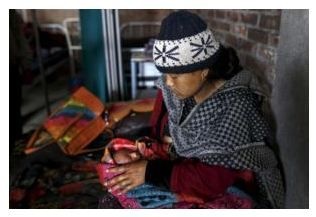
As labour pains gripped Junu Shrestha around midnight one day in early July, the heavily pregnant villager set off on foot along a muddy path destroyed in Nepal’s earthquake, desperate for help.
She stumbled in the dark for two hours before reaching a handful of medical tents erected after the 7.8-magnitude quake on April 25 flattened her local clinic.
“It was dark and scary. I didn’t know what would happen,” the 21-year-old said of finally reaching the tents with her mother-in-law in time to give birth.
“I had to keep stopping because of the pain.”
Some 70 percent of pre-natal clinics that had been providing crucial services to pregnant women were severely damaged in the Nepalese districts hardest hit by the quake.
Nearly 8,900 people died and some 600,000 homes were reduced to rubble in the disaster across the impoverished Himalayan nation.
Now with monsoon rains slowing rebuilding and relief efforts, fears are mounting of a reverse in the country’s recent progress in reducing maternal and neonatal deaths.
More than 30,000 women have given birth in the worst-hit districts since the disaster.
But many like Shrestha, living in remote hilly villages, have been forced to brave quake-damaged trails that face the risk of landslides from aftershocks and rains in order to reach medical help.
Many babies have been stillborn while premature deliveries tripled in the worst-hit districts, according to health experts, who say the shock and trauma triggered by the disaster led to a surge in medical complications experienced by pregnant women.
“In normal circumstances we expect that about five percent of pregnancies would turn out to be premature deliveries but after the earthquake we saw it was about 15 percent,” said Asha Pun, maternal and newborn health specialist at UNICEF.
‘Quake took my home’
Shrestha considers herself lucky to be alive after she was hit by falling furniture when the quake struck. Her family pulled her from the rubble of their home in Gerkhu village in Nuwakot district, around 30 kilometres (17 miles) north of Kathmandu.
But they could not save her 14-year-old sister-in-law.
“The earthquake took my home, it left me with injuries and it killed my little sister-in-law,” Shrestha said, bursting into tears.
Only five out of 21 birthing centres were left standing in Shrestha’s district, while many villages were cut off.
“Everything is a challenge, from getting to the villages to equipping the birthing tents to ensuring support to our overstretched staff who are working 24/7 despite having suffered so much themselves,” the district’s public health nurse, Sanu Maiya Rana, told AFP.
Aid agencies like UNICEF mobilised quickly to organise delivery of waterproof tents and essential supplies including antibiotics, gloves and surgical instruments.
But health workers still fear the disaster will wipe out years of hard work invested in improving access to healthcare.
Nepal has been credited with slashing its maternal mortality rate—by a staggering 55 percent between 2000 and 2013, from 430 deaths per 100,000 live births to 190 deaths. And the birthing centres are a lifeline for rural families across the country.
“It has taken us so long to make maternal health a priority and now, with the birthing centres gone... and the rains here, I am very worried,” Rana told AFP.
“If the rains damage the roads even further, then how will women come to see us and who will ensure that they get medical care?”
Reason to hope
In Nuwakot, villagers are still living under tarpaulins and simple metal structures on hillsides four months after losing their homes in the disaster.
With just days to go before her due date, housewife Sita Pyakurel is fearful of delivering in the recently erected medical tents instead of a clinic.
“The tent feels too flimsy to offer protection against the wind and the rain... we already have water dripping from the roof of our shelter,” the 29-year-old mother of two said.
“Now frogs have started to show up at night, and if frogs are here, then snakes can’t be far behind.”
As the rain beat down on the tarpaulin roof of her temporary home, precariously erected on a ridge, Shrestha is worried for her family once again.
“I am afraid the rains will wash away our shelter... that illnesses will spread and make us sick,” she said.
But the successful birth of her son Jenish has given her reason to hope.
“Earlier I was scared... it was my first time giving birth so I didn’t know what to expect,” she said, holding him close.
“After he was born, I felt happy - I felt as though God was still with us, as though he had saved us.”



